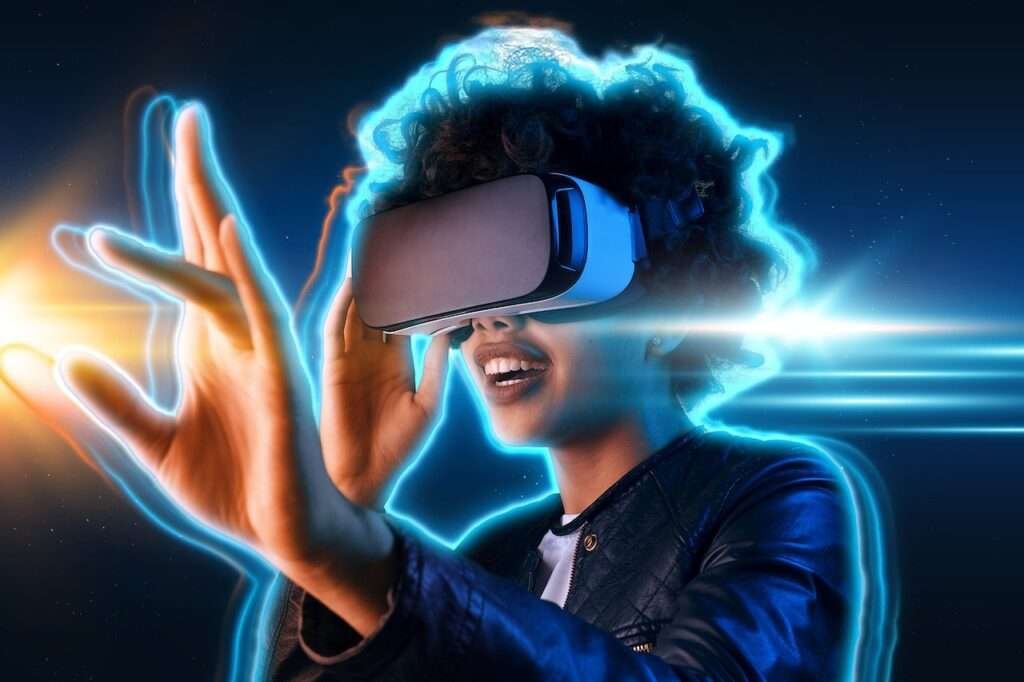Introduction
The concept of the “metaverse” became a hot topic when Facebook rebranded itself as Meta in October 2021, signaling its pivot toward building immersive virtual environments. The Facebook Metaverse aims to combine augmented reality (AR), virtual reality (VR), and digital platforms into a shared virtual space where people can work, play, socialize, and create. This blog explores what the Facebook Metaverse is, its key features, practical uses, and how it could transform the digital landscape.
What Is the Facebook Metaverse?
The Facebook Metaverse is a virtual ecosystem where users can interact using digital avatars in immersive 3D spaces. It goes beyond traditional social media by integrating advanced technologies like AR, VR, and blockchain. The metaverse isn’t just one platform; it’s a network of interoperable virtual environments designed to mimic real-life experiences.
Key technologies enabling the metaverse include:
- Oculus VR Headsets: Hardware for experiencing VR environments.
- AR Glasses: Tools for blending digital elements into the real world.
- Horizon Worlds: Meta’s social VR platform where users can build and explore virtual environments.
Key Features of the Facebook Metaverse
- Immersive Social Interaction
- Users can socialize, collaborate, and engage in shared virtual spaces with realistic avatars.
- Customizable Virtual Environments
- Build personalized worlds for gaming, meetings, or leisure.
- Digital Economy Integration
- Features like NFTs and cryptocurrency allow users to own and trade virtual goods.
- Interoperability
- Seamlessly connect different virtual environments, platforms, and services within the metaverse.
- Accessibility
- Platforms like Facebook Horizon and Messenger integrate with VR devices for ease of access.

Uses of the Facebook Metaverse
1. Social Networking
- Facebook’s metaverse reimagines social media by providing virtual spaces where friends and families can meet, celebrate, or simply hang out.
- Users can attend virtual events, such as birthday parties or concerts, without physical presence.
Example: Host a virtual movie night where participants interact in real-time through their avatars.
2. Remote Work and Collaboration
- The metaverse transforms remote work by creating virtual offices and meeting spaces.
- Employees can interact with 3D models, brainstorm in immersive environments, and simulate in-person collaboration.
Example: Meta’s “Horizon Workrooms” provides tools for virtual whiteboarding, presentations, and group discussions.
3. Education and Training
- Offers immersive learning experiences, such as virtual field trips or hands-on simulations.
- Used for professional training, especially in fields like healthcare, engineering, and military.
Example: Medical students can practice surgeries in a realistic virtual environment.
4. Entertainment and Gaming
- Create and explore virtual worlds with friends in multiplayer games.
- Attend virtual concerts, theater performances, or eSports tournaments.
Example: Fortnite hosted virtual concerts featuring global artists, which Meta could expand upon.
5. E-Commerce and Virtual Shopping
- Brands can set up virtual storefronts where users can browse and try products virtually.
- Integrating AR allows customers to visualize items in real-world settings before purchasing.
Example: A furniture store lets users place virtual chairs or tables in their living rooms using AR.
6. Healthcare and Therapy
- VR applications in the metaverse can help patients with therapy, such as exposure therapy for anxiety.
- Provides platforms for telemedicine consultations and remote diagnosis.
Example: A psychologist uses VR to simulate calming environments for stress relief sessions.

7. Real Estate and Architecture
- Virtual tours of properties or architectural designs can be experienced in 3D, providing a lifelike preview.
Example: Potential homebuyers can walk through properties in the metaverse before making decisions.
Benefits of the Facebook Metaverse
- Enhanced Connectivity: Enables users to interact in more meaningful and immersive ways.
- Global Access: Removes geographical barriers, making social, professional, and educational opportunities accessible.
- Creative Freedom: Encourages users to build, design, and monetize unique virtual experiences.
- Economic Opportunities: A digital economy opens up new revenue streams for businesses and individuals.
Challenges Facing the Facebook Metaverse
- Privacy Concerns: Managing data security and user privacy in such immersive spaces.
- High Entry Costs: VR/AR hardware like Oculus headsets can be expensive for the average user.
- Technological Limitations: Requires significant advancements in internet speed and graphics processing for a seamless experience.
- Regulation and Ethics: Issues like intellectual property rights, user safety, and digital asset regulation need to be addressed.
Future of the Facebook Metaverse
- Interconnected Platforms: Greater integration between Meta’s products (Instagram, WhatsApp, and Horizon Worlds).
- Mainstream Adoption: Affordable VR/AR hardware and better accessibility will drive adoption.
- AI-Enhanced Interactions: AI will personalize metaverse experiences and enable more realistic avatars.
- Decentralized Ecosystem: Incorporating blockchain could empower users to own their data and digital assets.
Conclusion
The Facebook Metaverse represents a bold vision of the future, blending digital and physical realities into a unified experience. While challenges like cost and privacy remain, the potential applications—from entertainment to education—are limitless. As technology evolves and adoption grows, the Facebook Metaverse could redefine how we work, play, and connect in the digital age.

